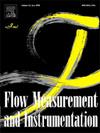一种自动流量控制阀阀芯稳态位置的研究
IF 2.7
3区 工程技术
Q2 ENGINEERING, MECHANICAL
引用次数: 0
摘要
自动流量控制阀是维持管道系统内流体流动稳定的关键部件,能够自动适应流量和压力的变化。其核心部件的可靠性对阀门的性能有重要影响。对自动阀芯作为主要调节元件进行了仿真建模和实验验证。研究得到了不同压差和开度下阀芯的位置。结果表明:在高压差下,阀芯随开度的减小而下降,而在恒定开度下,阀芯随压差的减小而升高。值得注意的是,由于阀门泄漏效应,在低压差下,阀芯高程随着开度的减小而增加,观察到反比关系。研究结果为自力式流量控制阀的弹簧设计和参数选择提供了理论指导。本文章由计算机程序翻译,如有差异,请以英文原文为准。
Research on the steady-state position of the automatic spool of a self-operated flow control valve
The self-operated flow control valve is a critical component designed to maintain stable fluid flow within pipeline systems, capable of automatically adapting to variations in flow rate and pressure. The reliability of its core components significantly influences valve performance. As the primary regulating element, the automatic valve spool was investigated through simulation modeling and experimental validation of a self-operated flow control valve. The study obtained the spool positions under various pressure differentials and opening degrees. The results demonstrate that under high pressure differentials, the valve spool descends as the opening degree decreases, while at constant opening degrees, the spool rises with reducing pressure differentials. Notably, due to valve leakage effects, an inverse relationship was observed under low pressure differentials where the spool elevation increases with decreasing opening degree. These findings provide theoretical guidance for spring design and parameter selection in self-operated flow control valves.
求助全文
通过发布文献求助,成功后即可免费获取论文全文。
去求助
来源期刊

Flow Measurement and Instrumentation
工程技术-工程:机械
CiteScore
4.30
自引率
13.60%
发文量
123
审稿时长
6 months
期刊介绍:
Flow Measurement and Instrumentation is dedicated to disseminating the latest research results on all aspects of flow measurement, in both closed conduits and open channels. The design of flow measurement systems involves a wide variety of multidisciplinary activities including modelling the flow sensor, the fluid flow and the sensor/fluid interactions through the use of computation techniques; the development of advanced transducer systems and their associated signal processing and the laboratory and field assessment of the overall system under ideal and disturbed conditions.
FMI is the essential forum for critical information exchange, and contributions are particularly encouraged in the following areas of interest:
Modelling: the application of mathematical and computational modelling to the interaction of fluid dynamics with flowmeters, including flowmeter behaviour, improved flowmeter design and installation problems. Application of CAD/CAE techniques to flowmeter modelling are eligible.
Design and development: the detailed design of the flowmeter head and/or signal processing aspects of novel flowmeters. Emphasis is given to papers identifying new sensor configurations, multisensor flow measurement systems, non-intrusive flow metering techniques and the application of microelectronic techniques in smart or intelligent systems.
Calibration techniques: including descriptions of new or existing calibration facilities and techniques, calibration data from different flowmeter types, and calibration intercomparison data from different laboratories.
Installation effect data: dealing with the effects of non-ideal flow conditions on flowmeters. Papers combining a theoretical understanding of flowmeter behaviour with experimental work are particularly welcome.
 求助内容:
求助内容: 应助结果提醒方式:
应助结果提醒方式:


